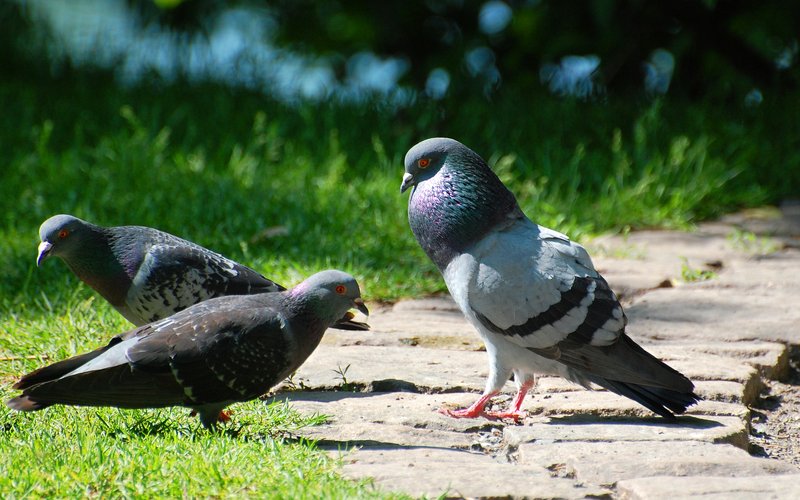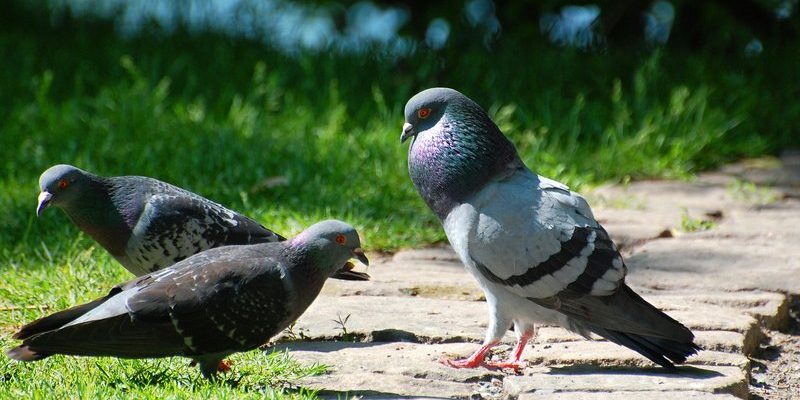
Imagine a busy city street, with rock pigeons perched among the bustling crowd. Amidst the chaos, a male pigeon struts about, puffing out his chest and cooing softly to catch the attention of a female. This isn’t just a random act; it’s a carefully choreographed courtship ritual meant to establish a bond. In this article, we’ll explore the fascinating world of rock pigeon courtship and mating, from their feathered displays to their nesting habits, and why understanding these behaviors is important for both bird lovers and nature enthusiasts alike.
The Role of Display in Courtship
One of the most striking aspects of rock pigeon courtship is their display behavior. Males often engage in a series of theatrical maneuvers designed to impress potential mates. They begin by puffing out their chests and flapping their wings in a rhythmic manner. It’s as if they’re putting on a show, saying, “Look at me! I’m strong and healthy!”
During this display, you might notice them head-bobbing, which is another part of their flirtation. Picture it like a slow dance, where the male moves his head forward and backward while cooing gently. This not only attracts the female’s attention but also shows off their impressive feathers, which can catch the eye of a passing pigeon.
Moreover, the males make various vocalizations, from soft coos to more pronounced calls. Each sound conveys different messages, like announcing their presence or indicating their fitness level. Mating rituals are often a combination of visual displays and vocal communications, signaling to females that they’re prime candidates for reproduction.
Nesting Habits and Site Selection
Once a pair of rock pigeons has formed a bond through their courtship displays, they move on to the next phase: nesting. Choosing a nest site is critical for these birds since it can play a significant role in the survival of their offspring. Rock pigeons tend to favor cliff-like structures or ledges, mimicking their natural habitat.
You can often find them nesting on building ledges, bridges, or even in parks. The male will scout for the perfect location and often brings the female to show off his choice. It’s kind of like a home tour, where the male shows his partner around what could be their future home. They typically use twigs, grass, and other materials to build a nest that protects their eggs from predators.
Here’s the thing: rock pigeons can be very selective about their nesting sites. They prefer locations that offer some protection and a good view, allowing them to be alert to potential threats while nurturing their young. Their careful selection process emphasizes the importance of finding a safe and comfortable space for raising their chicks.
Pair Bonding and Cooperation
After finding a suitable nesting site, rock pigeons enter a phase of cooperation that strengthens their bond. This relationship isn’t just romantic—it’s practical, too. Both parents take an active role in raising their chicks, which is crucial for the survival of their young.
Upon laying eggs, the female incubates them for about 18 days, while the male helps by bringing food and keeping a lookout. What’s fascinating is that after hatching, both parents continue to feed their chicks with a special substance called “pigeon milk.” It’s a nutrient-rich secretion produced in their crops, and it’s incredibly important for the growth of the chicks.
The cooperation between the pair creates a nurturing environment, which is essential for the survival of their young. This shared responsibility not only strengthens the pair bond but also ensures that the chicks receive the care they need during those crucial early days.
The Significance of Monogamy
Rock pigeons are known for their tendency to form long-lasting pair bonds, often returning to the same mate year after year. This monogamous behavior is not just about romance; it’s also about survival. By sticking with a single partner, both birds can share the responsibilities of raising their young effectively.
You might be wondering why this matters in the wild. Well, rock pigeons face various challenges, from predators to environmental shifts. With a reliable partner by their side, they can navigate these obstacles more efficiently. Each pigeon knows their role in the classic dance of parenting, making their teamwork vital for the success of their offspring.
Additionally, this long-term partnership allows them to build a strong attachment, which can enhance their reproductive success. Pairs that have been together for multiple seasons often have better outcomes in terms of chick survival, showcasing the benefits of their committed relationship.
Challenges in Courtship and Mating
Of course, not everything in the life of a rock pigeon is smooth sailing. There are plenty of challenges they face during courtship and mating. For instance, competition among males can be fierce. This rivalry may involve aggressive displays and even physical confrontations over territory or mates.
Mature males may engage in fights to establish dominance, showcasing their strength and fitness. These displays are about more than just winning a mate; they’re crucial for maintaining their territory and securing a safe space for their nest.
Additionally, environmental factors like habitat loss and urbanization can affect their mating success. As cities expand, natural nesting sites become scarcer, making it harder for rock pigeons to find safe places to raise their young. This can lead to decreased reproductive success and an increase in competition for the remaining locations.
Understanding Rock Pigeon Courtship in Conservation
Understanding the courtship and mating rituals of rock pigeons is essential for conservation efforts. By grasping their behaviors, we can better protect their habitats and ensure their survival in urban landscapes. Educating others about these fascinating rituals can also foster a greater appreciation for these often-overlooked birds.
For instance, community initiatives that create safe nesting spaces can help rock pigeons thrive in urban settings. You might find public awareness campaigns highlighting the importance of preserving green spaces or creating nesting boxes in public areas.
Moreover, educating people on the ecological role of rock pigeons can encourage compassion and protection for these birds. They play a crucial role in their ecosystems, contributing to seed dispersal and serving as a food source for other wildlife.
As we’ve explored the courtship and mating rituals of rock pigeons, it’s clear that these birds are far more than just common sights in our cities. Their elaborate displays, cooperative parenting, and long-term bonds reveal a complex world of love and survival. By understanding these behaviors, we not only gain insight into the lives of rock pigeons but also recognize the importance of protecting their habitats.
Rock pigeons remind us that beauty and complexity can be found in even the most familiar creatures. So the next time you spot a pair of rock pigeons cooing softly to one another, take a moment to appreciate the delicate dance of courtship happening right before your eyes. It’s a small, yet significant, part of nature’s tapestry.

